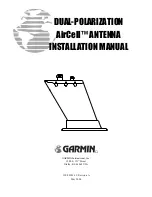NXP Semiconductors
AN11740
PN5180 Antenna design
AN11740
All information provided in this document is subject to legal disclaimers.
© NXP B.V. 2018. All rights reserved.
Application note
COMPANY PUBLIC
Rev. 1.1 — 19 June 2018
345311
9 of 62
2. a signal generator with a pattern generator, that provides the load modulation signal
as a response to the PCD test commands.
The response must be triggered by the PCD test command, i.e. the signal generator
needs a delayed trigger input either from the field or from the PCD itself. The voltage
level of the load modulation input signal for each test case must be (pre-) calibrated in
the TestPCD set up.
The PCD must be able to receive all the responses with the given minimum load
modulation signal level.
2.2 EMVCo specifics
Heading 3 EMVCo specifies a contactless interface for point of sales (POS) terminals (=
PCD) and the corresponding contactless payment cards in [6]. This interface is very
similar to the one defined ISO/IEC 14443, but it uses its own set of requirements and
specification details. The EMVCo test equipment and way of testing is quite different from
the test specification as defined in ISO/IEC 10373-6.
For the reader tests a calibrated EMVCo Reference PICC is required. This Reference
PICC can be bought only from one of the accredited labatories.
Some of the antenna design parameters also need to be adapted towards EMVCo
requirements.
The
most
relevant analog tests for PCDs are:
1. PCD power test (field strength)
2. Modulation PCD-> PICC tests (wave shape tests)
3. Load modulation tests
EMVCo specifies and requires only the bit rate of 106kbit/s for both type A and B, but no
higher bit rates.
Note:
This application note does not replace the detailed test description in the EMVCo
specifcation.
2.2.1 EMVCo Operating volume
One main difference for the tests is the definition of an operating volume, as shown in Fig
6. This volume is tested with the EMV-Reference-PICC.


















